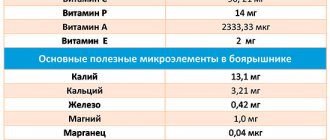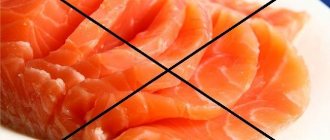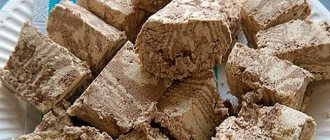About a common mistake of breastfeeding women
In his interviews and books, Dr. Komarovsky says that many mothers make one mistake - they eat a lot and too often. You need to understand that when breastfeeding, a woman should eat normally and not overfeed herself with large amounts of food. Otherwise, you will even get the opposite effect when the baby receives waste and toxins with the milk.
Read about how to prepare for the appearance of your first teeth.
Milk production, this is the second common misconception of many mothers, does not require many calories. As a rule, the process requires no more than 500 calories per day from the body, and all excess will settle on the hips, sides and abdomen.
Rules for losing weight for nursing mothers
A nursing woman cannot go on the first diet she comes across, because her main calling is to be a good mother. But you can adjust your diet. To do this, you will need to remember a few rules:
- Only a few months have passed since giving birth? Then forget about diets and restrictions. Just don't eat fatty or starchy foods. This will not affect the taste and quality of the milk, but it will affect your waist size. Now it is more important for you to follow the menu of a nursing mother at 1 month of a newborn’s life, which we wrote about here.
- In order to lose weight, a nursing mother’s menu must contain all the necessary vitamins and microelements, because good breast milk must be nourishing and nutritious.
- If a woman begins to gain weight while breastfeeding, this indicates an unbalanced diet. Calculate the approximate amount of fats, carbohydrates and proteins. Avoid foods that cause obesity - carbonated drinks, confectionery, fatty fish and pork, nuts, seeds, pasta, sweet juices, white bread. Additionally, we recommend that you read the article about what you can and cannot eat while breastfeeding at the link.
- Eat light foods. Reduce the amount of fried foods, increase the consumption of vegetables, cereals and fruits.
- Meat - once a day.
- Keep a calorie diary. Your daily norm is about 1500 kcal (for short and fragile by nature) and up to 2000 kcal (for stately young ladies).
- Eat from small plates. This will prevent you from overeating.
- Hide prohibited foods away.
- Don’t finish your children’s porridge and puree. Better make a face mask out of them.
- Do not turn a sample meal into a full meal.
- Eat small meals - up to 6 times a day.
- Dinner - no later than 4 hours before bedtime. This should be a low-calorie dish, for example, a glass of kefir and cookies.
- Do not take medications or dietary supplements for weight loss. This will harm the baby.
Menu for mother when feeding for the first month
It is quite difficult to compile a menu for a nursing mother by month, a table according to Komarovsky for the first and subsequent months. As for the first month, you must definitely drink two liters of clean water a day - all of it will be used for lactation. You should not drink more, it will reduce the amount of milk.

It’s great if the menu contains a lot of raw foods that are not heat-treated. Berries, fruits and vegetables can be eaten up to 350 grams per day. They help the body recover quickly after childbirth. You just need to eat foods that are grown and harvested in your area: without toxins, insecticides and nitrates.
Nutrition for a nursing mother from 3 to 6 months
Three months have passed, and the baby has become acquainted with the most basic products, which he will very soon be able to try in person. It's time to adapt your little tummy to the following “goodies” and “useful things”:
- fresh vegetables - beets, zucchini, pumpkin, carrots and dishes made from them;
- fresh fruits in season, starting with apples and pears;
- bananas;
- walnuts and hazelnuts (if there are no allergies);
- liver;
- buckwheat;
- rice;
- porridge – pearl barley, barley, millet;
- water noodles with added milk;
- boiled or baked low-fat fish;
- cooked cabbage dishes;
- mild spices.
Prohibited:
- citrus;
- garden berries (strawberries, red currants);
- coffee;
- strong black tea.
From four months, pediatricians recommend giving your baby his first food. Typically this is apple juice. From about the same time, colic becomes less and less frequent and stops bothering the baby completely. However, the mother still needs to adhere to the diet as long as she breastfeeds the baby. Compliance with the rules for introducing new products will protect your baby from diathesis and disorders of the digestive system.
What foods form the basis of nutrition:
1. Lean meat, stewed or boiled. Veal or rabbit are excellent. 2. You can eat milk and dairy products, but not often and in small quantities. For example, three times a week you can allow yourself 200 grams of cottage cheese. 3. Fish is included in the diet a maximum of twice a week. Give preference to cod, pike perch or hake. 4. You can eat up to three eggs a day. 5. Bread in a nursing woman’s diet should only be made from wholemeal flour, preferably rye flour. 6. You can eat pasta, but only those made from durum wheat. 7. Millet and buckwheat, oats are the best porridges for the first month of breastfeeding. 8. Up to 450 grams per day you can eat fresh or boiled, steamed vegetables. First of all, pay attention to pumpkin and beets, carrots, and zucchini.
Important! Of course, there are also prohibited products for this period. You need to avoid any canned food, marinades, or homemade pickles. All semi-finished products, mayonnaise and sauces, coffee and alcohol are prohibited. Also on the list of prohibited foods are grapes, white cabbage, honey and nuts, chocolate, cheese and sausage.
For convenience, Dr. Komarovsky recommends keeping a food diary. Then it will be easy to record what the mother ate during the day and what new product she introduces into her diet, and how the baby reacts to this product.
Latest current news on maternity capital.
Diet of a nursing mother
How to eat while breastfeeding to lose weight? Needed daily:
- eat cottage cheese or curd products (50 - 100 grams);
- eat meat (200 grams);
- eat vegetables (600-800 grams);
- eat bread (400-500 grams);
- consume vegetable oil (20-30 grams);
- eat fruit (from 300-500 grams);
- drink yogurt, kefir, milk (from 0.5 l);
- there is butter, eggs (50 grams).
Or:
- eat 2-3 servings of dairy products every day (this includes cottage cheese, milk, yoghurts, and cheeses);
- from 2 to 3 servings of nuts, meat, eggs, chicken, fish;
- from 3 to 5 servings of vegetables;
- from 6 to 11 servings of various cereals and bread;
- from 2 to 4 servings of fruit (for example, in the form of fruit salads).
Menu for women when breastfeeding from 2 to 6 months
Menu for a nursing mother by month, the table according to Komarovsky shows that when the baby turns two months old, the diet can be expanded. Already during this period, the amount of fresh vegetables and fruits can be slightly reduced, and more cooked food can be added to the diet.

For example, you can cook lean borscht with tomato juice, eat any seasonal fruits and nuts (with the exception of peanuts and pistachios). Supplement rabbit and veal meat with quail and chicken. A few spoons of sweet jam are allowed as dessert.
Nutrition for a nursing mother after six months
Six months after birth, several new products have already been introduced directly into the baby’s diet. During this period, mom can try:
- fresh onions;
- garlic;
- potatoes - a little;
- fried foods;
- bitter chocolate;
- fruits: kiwi, pineapple;
- eggs;
- freshly squeezed fruit and vegetable juices;
- compotes;
- legumes (beans and peas).
A nursing mother who has been eating fairly monotonous food for a long time can be understood, but you shouldn’t pounce on everything at once; you can treat yourself to chocolate a couple of times a week. One or two slices in the morning will lift your spirits. Don’t forget to monitor your growing baby’s reaction!
Still can't eat:
- mayonnaise;
- canned food;
- fast foods;
- semi-finished products;
- smoked meats;
- butter and sweets, including ice cream;
- grape;
- carbonated drinks and drinks containing synthetic colors.
After six months—approximately 8 months from the baby’s birth—the mother gradually returns to her previous, familiar diet. The little man has already tried many foods on his own, so you can safely eat what he eats (but not vice versa!).
If you continue to breastfeed, refrain from foods that are not at all healthy not only for your baby, but also for you.
By following a diet throughout your pregnancy, you are building the foundation for your baby’s health. By continuing to be selective in your diet after childbirth, you not only give health to the newborn and strengthen his immunity, but also recover faster yourself.
Products that need to be mentioned separately.
Fast foods, colored carbonated water, fast food products, and, of course, alcohol - all this causes irreparable harm not only to the fetus during pregnancy, but also to the mother!
Even if after the birth of the baby there is no visible reason for worry, the consequences may appear after a while. So, you should not risk your health and the health of your treasure, and exclude these dangerous foods from your diet completely.
Menu for women when breastfeeding from six months to a year
In our medicine, it is officially considered mandatory, if the mother has such an opportunity, to breastfeed her child for up to six months. However, it is ideal if a woman breastfeeds her baby for up to a year. From the age of six months, additional complementary feeding of the child is already done, so that less milk is required, young mothers can expand their menu.
For example, you can already try exotic fruits, seafood, add some legumes, garlic, and chocolate to your diet. The best time to experiment is in the morning. It's helpful to know what to do if your child has seizures.
This is exactly what the menu of a nursing mother looks like by month, table according to Komarovsky. Then, from the age of one year, when the child is completely transferred to a separate diet, the mother can safely return to her usual diet. Although, of course, many healthy habits acquired during pregnancy and lactation can be maintained.
GW helps you lose weight

The purpose of this article is to offer you valuable, useful information on how to lose weight while breastfeeding. By following these weight loss tips and diet, you can start losing weight and get back to your pre-pregnancy shape. However, there are times when minor lifestyle changes and the right mindset are needed to help the body begin to use extra maternal fat for feeding rather than holding on to it. The goal is to stimulate the body to use excess maternal reserves so that it can return to its original weight.
The 5 Most Important Steps to Losing Weight While Breastfeeding
Below are some principles to follow to help you start losing excess weight after giving birth, while at the same time ensuring that you produce enough milk to meet your baby's needs. However, it is highly recommended to start this weight loss program after two months postpartum.
Eat a balanced diet for weight loss, as well as a snack a couple of hours later, that is, 2 hours before. A newborn baby generally eats every 3-4 hours or more often. This means that a breastfeeding woman's body will use a large amount of energy to produce breast milk.
Nursing mothers need to drink plenty of water. What some people don't know is that breast milk is 50% water . In addition, water is a necessary component in the metabolic process. The unwritten rule on how to lose weight while breastfeeding is to drink a glass of water after each breastfeeding throughout the day.
The only way to know when the body needs extra energy is by feeling hungry. Thus, the desire to eat will not go unnoticed even immediately after eating. The reason some people feel hungry much faster than others is because the foods they eat contain a lot of carbohydrates.
Once you've been cleared by your doctor to exercise, it's important to clear a couple of hours into your post-pregnancy plans for weight loss while breastfeeding. Work towards training for weight loss is routine, slowly increasing in frequency and duration. Make sure to include cardiovascular and endurance exercise in your weight loss program. If possible, include your child in the process. The strollers have been specially designed to provide excellent resistance to help increase your heart rate. Go outside for a walk and spend time with your child every now and then. Long walks in the fresh air are a better way to lose fat than taking diet pills.
It is important to note that weight gain is a gradual process, and it should also be lost gradually. Resist the temptation to do something drastic, such as taking phentermine while breastfeeding.
We hope you found these simple tips on how to lose weight safely while breastfeeding helpful. Please feel free to share your thoughts in the comments below.










